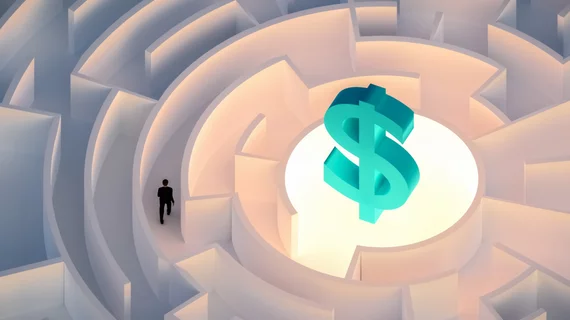Radiologists rarely break even in No Surprises Act payment disputes, new study finds
Radiologists rarely break even in payment disputes initiated under the No Surprises Act, according to a new analysis published Wednesday in the American Journal of Roentgenology [1].
Congress enacted the landmark law in 2020 to help protect patients from unexpected medical bills, and the NSA has largely succeeded in doing so. However, high fees for the process are limiting physicians’ ability to dispute payments, undermining their bargaining power in contract negotiations, experts noted.
To drive this point home, researchers analyzed more than 76 million claims for hospital-based specialties commonly associated with in-network emergency department visits or inpatient stays. They estimated that radiologists broke even for only about 11% to 27% of claims in such disputes, leaving health insurers wielding much of the power.
“With the [independent dispute resolution] process not being a financially viable mechanism to resolve payment disputes in most instances, the IDR rulemaking has favored insurers, as the insurer-determined payment stands absent successful negotiation or an IDR ruling,” study co-author Ali S. Raja, MD, MBA, a professor of radiology at Harvard, said in a Jan. 17 announcement from the Neiman Health Policy Institute. “Broadly, clinicians are disadvantaged in network-rate negotiations with payers if they have no reasonable avenue to set their own rates; they lose all bargaining power when negotiating in-network rates with insurers, who are no longer at risk for higher [out-of-network] rates.”
Raja and colleagues gathered their information from Optum’s national commercial database. They retrospectively pinpointed claims for hospital-based specialty services occurring on the same day as an in-network ED visit or inpatient stay between 2017 and 2021. Nearly 1.5 million claims (or 2%) were identified as out-of-network. For radiologists, the percentage of OON claims for which the maximum potential recovered payment exceeded the thresholds of $150 and $450 (financial break-even points for entering the independent dispute resolution process) was 55% and 32%, respectively. At payment of one-quarter of the maximum amount sought by radiologists, the percentages dropped to 27% and 11%, respectively.
The analysis also included other specialists commonly impacted by the No Surprises Act such as anesthesiologists, emergency medicine physicians, hospitalists, intensivists, lab professionals, neonatologists and pathologists. Across the eight specialties examined, lab-based providers had the lowest break-even range (at 8%-21%) while neonatologists had the highest (69%-89%).
“In conclusion, for a substantial fraction of [out-of-network] claims, it is financially inviable to use the [No Surprises Act independent dispute resolution] process to resolve reimbursement disputes with payers, as the expected payments from the process are unlikely to cover associated fees,” the study closed. “This fraction is higher for radiology than for other hospital-based specialties. Although the NSA significantly reduces patients’ financial exposure to OON claims, the IDR rulemaking does so in a way that substantially reduces clinicians’ opportunity to negotiate reimbursement disputes, thus reducing their bargaining power during insurance contract negotiations.”
Read much more, including potential study limitations, in AJR at the link below.

